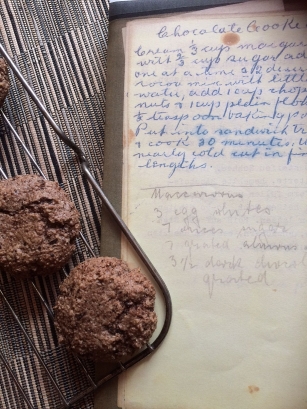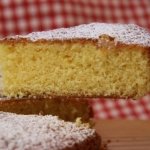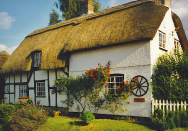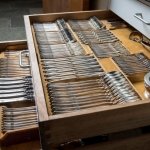I’ve spent many a happy hour in the kitchen lately, cooking from recipes that belonged to Rose Seidler. They have been gifted to the Rose Seidler House collection thanks to the generosity of Penelope Seidler, AM, wife of Rose’s son, Harry, who no doubt enjoyed many of the dishes recorded in them.
In good order
There are two hardcover folios, similar in dimension to today’s A5, filled with recipes recorded in German, a firm reminder of the Seidler’s Austrian heritage. The recipes have been recorded using a type-writer fitted with black and red ribbon. One book is dedicated to sweet recipes, the other, savoury, and they include many traditional Austrian classics.
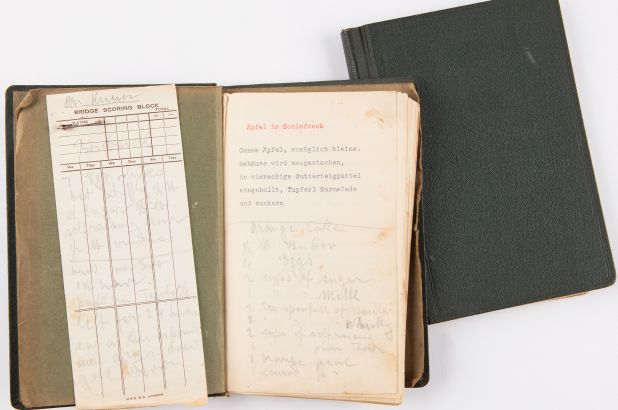
Rose Seidler’s cookery books © Sydney Living Museums
The recipes have been compiled very systematically, more-or-less alphabetically according to the recipe names, although some have been clustered by recipe type – for example, various kinds of dough for dumplings or noodle. The savoury recipes book is divided into sections with coloured divider cards – foundation recipes such as aspic, stock and soups; egg dishes, including mayonnaise, hors d’oeuvres and gratin; a vegetables and a meat section, and finally, beverages hot and cold. We’ve recruited a couple of German speaking colleagues to help translate them, and I’m looking forward to testing some of them for this blog – so watch this space.
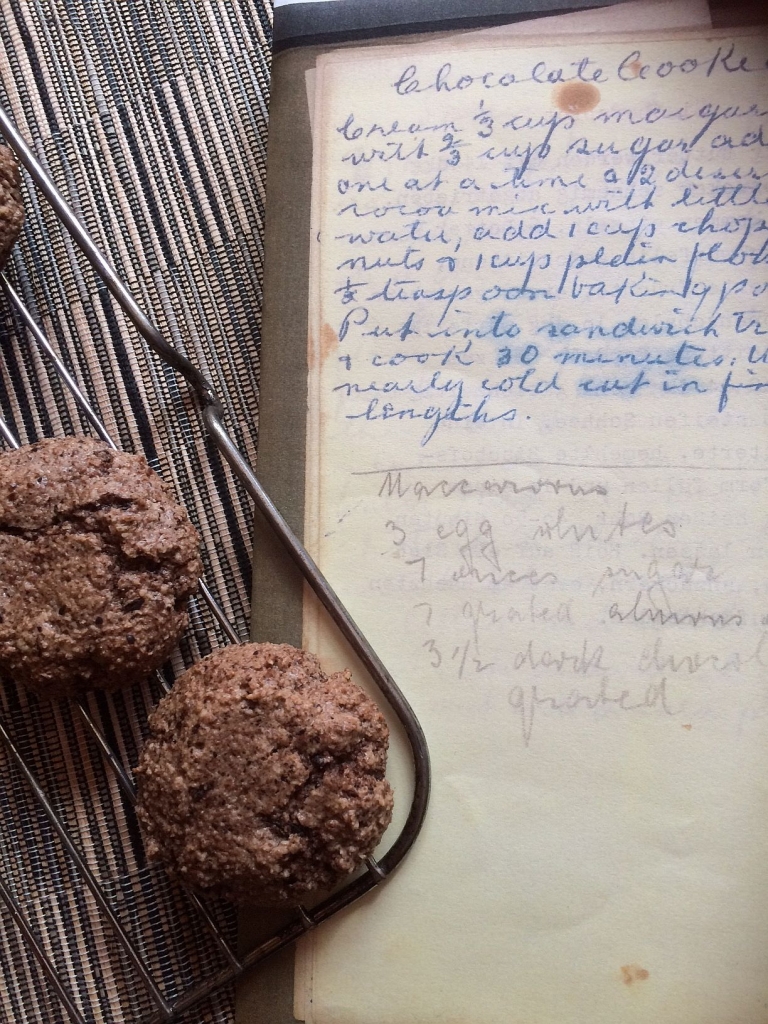
Maccaroons and recipe recorded by Rose Seidler. Photo © Jacqui Newling for Sydney Living Museums
Written into history
In addition to the typed content, there are several handwritten recipes entered into the pages of the books, and on loose sheets of paper, many of them in Rose Seidler’s hand, along with a few obviously written by others. Fortunately for me, most of them are in English. So far I’ve had great success with the ‘Three fruit marmalade‘, which we featured in The Cook & the Curator earlier this month, two of the orange cake recipes and the chocolate maccaroons (redacted recipe below), which were served for afternoon tea at our ‘Eat your history at Rose Seidler House’ program last week. ‘Chocolate cookies’ were less appealing, and a ‘chocolate icing’, while deliciously laced with coffee, was more of a syrup than our idea of icing.
As with many handwritten recipes recorded by accomplished cooks, the maccaroons and the better of the two orange cakes (as voted by my eager colleagues who have enjoyed the taste tests!), have no method or cooking instructions.
Maccaroons
3 egg whites
7 ounces sugar
7 grated almonds
3 1/2 dark chocolate grated
(metric conversion below)
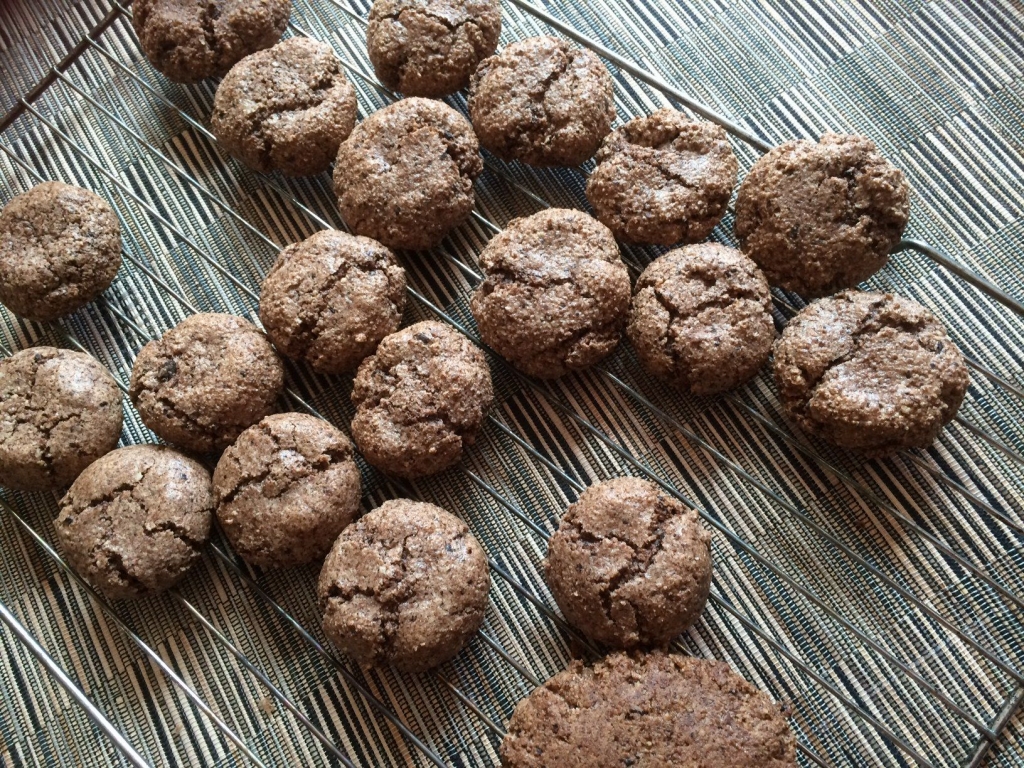
Maccaroons made from Rose Seidler’s recipe Photo © Jacqui Newling Sydney Living Museums
Culinary senses
It is wonderful to share some of the flavours and tastes that would have been enjoyed by the Seidler’s and their friends, even more-so because we can visit the kitchen that Rose would have made them in, and imagine the whir of the Kenwood ‘Chef’ as it whipped eggs for the maccaroons, and the aromas a wafting from the oven as the biscuits cooked.
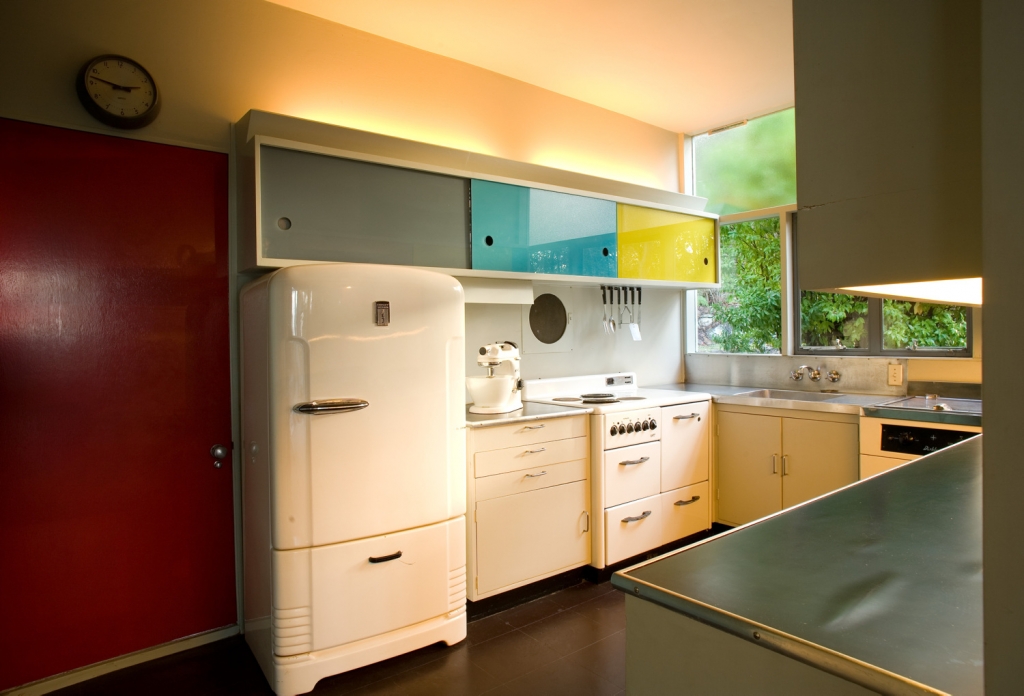
The kitchen at Rose Seidler House. Photo © Justin Mackintosh for Sydney Living Museums
Rose Seidler’s maccaroons
Ingredients
- 3 egg whites
- 200g caster sugar
- 200g almond meal
- 100g dark chocolate, grated
- flaked almonds, optional
Note
As with many handwritten 'recipes' belonging to accomplished cooks, there are no cooking instructions for these maccaroons in Rose's notes, just the ingredients.
Directions
| Preheat oven to 180°C or 160°C fan forced. Line a baking tray
with baking paper and dust it with cornflour.
Using electric beaters, whisk the egg whites in a large, squeaky-clean bowl until soft peaks form. While continuing to beat, add the caster sugar a few spoonfuls at a time until the mixture becomes thick and glossy and stiff peaks form. In a separate bowl, mix together the almond meal and grated chocolate, then fold this mixture into the egg mixture, until fully incorporated and evenly distributed. Using damp hands (or wearing food-safe gloves) form the mixture into walnut-sized balls and arrange on the baking tray, leaving space between them as they will expand. Press each ball lightly in the centre, placing an almond flake, if using, in the depression left by your finger. Bake for 15 minutes, or until the biscuit has dried and firmed on the outside (it will still be soft to the touch but will crisp up once cooled). Remove from the oven and allow to cool for a few minutes on the tray before transferring to a cooling rack. Store in an airtight container in a cool dry place for up to two weeks. | |
| COOKS TIP: Place the grater and the chocolate in the freezer for more efficient grating, or, if using a food processor, chill the chocolate and the grating disc. | |
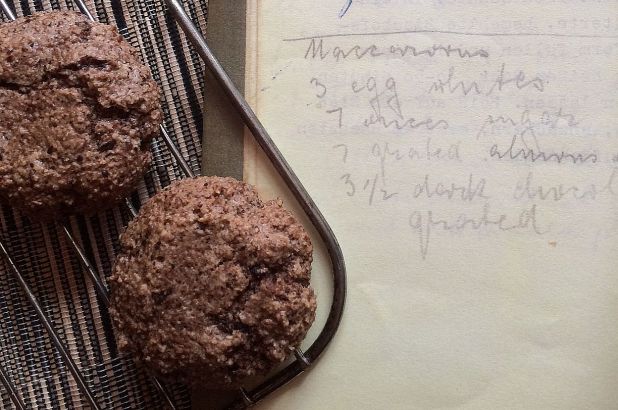
 Print recipe
Print recipe